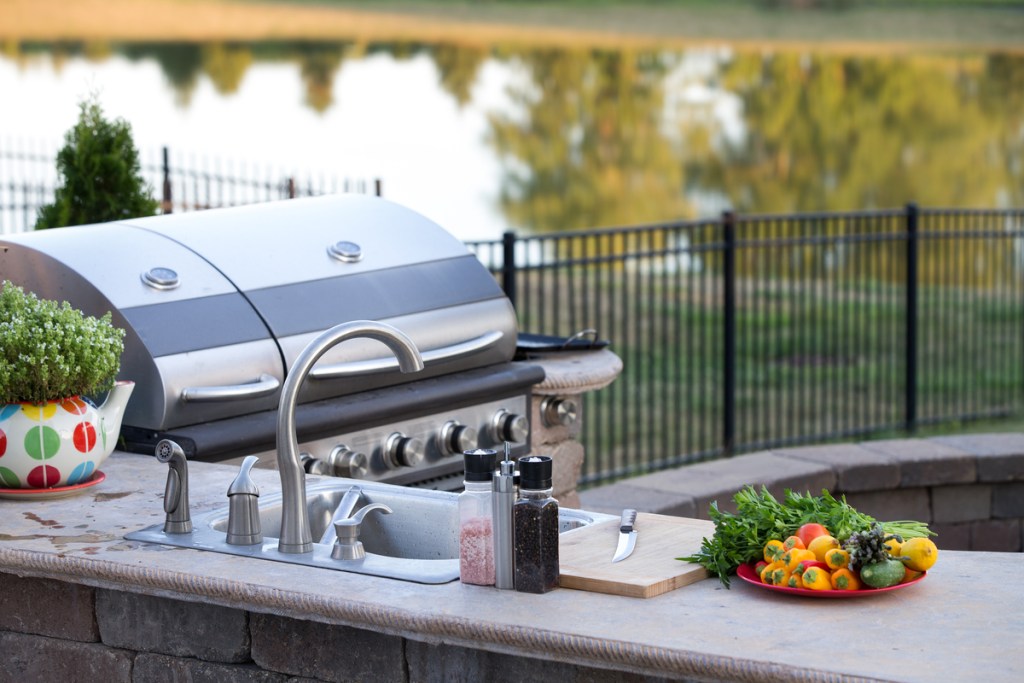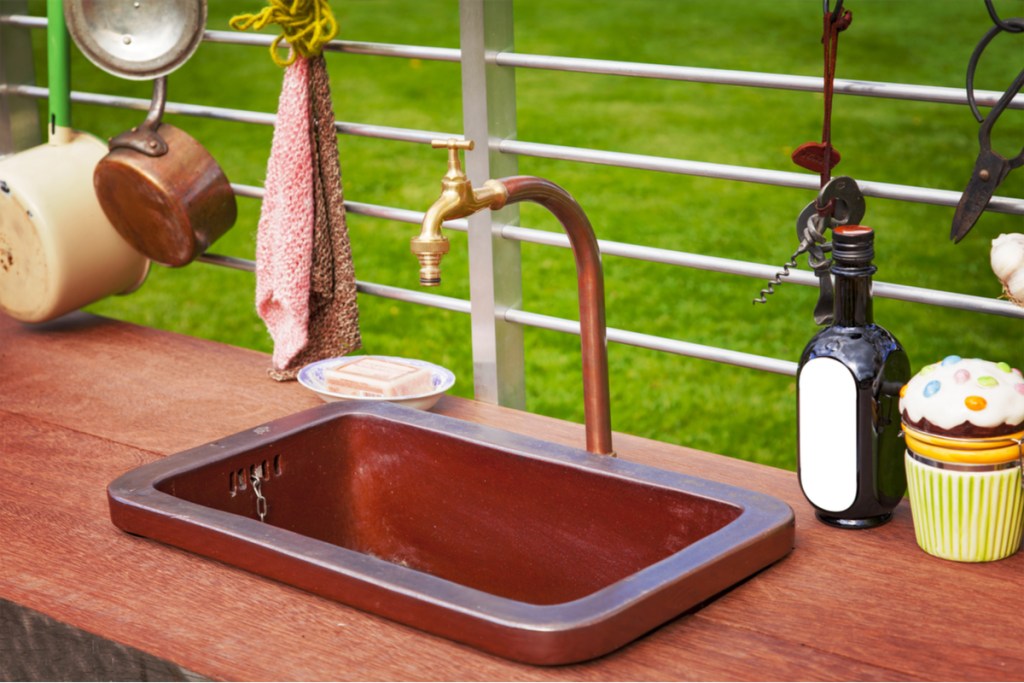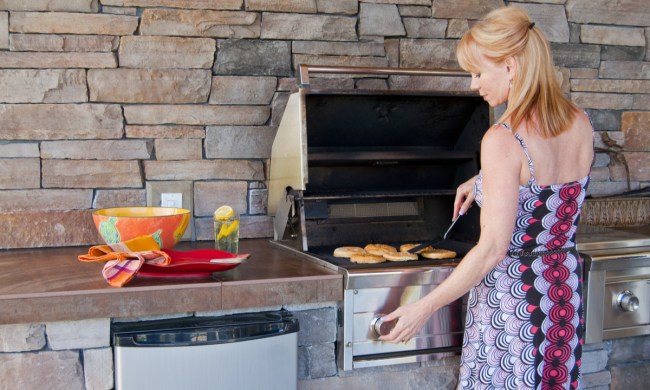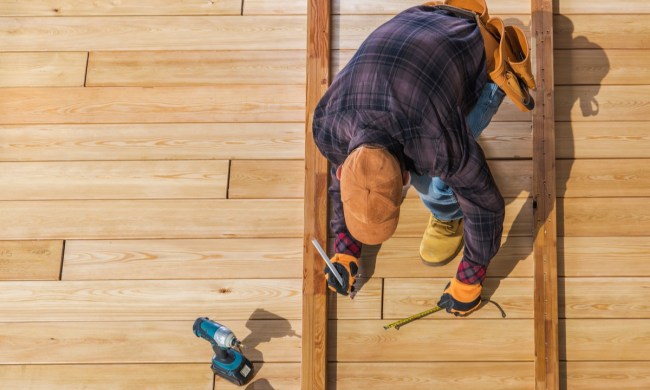Setting up an outdoor kitchen can be quite an undertaking, but it’s well worth your time, energy, and money if you want to prepare food for your guests outside. Naturally, an outdoor kitchen and an outdoor sink go hand-in-hand. The process of selecting and installing an outdoor sink, however, can be a confusing one. Deciding on the material alone can put you down a rabbit hole, so what are the main factors to consider when setting up a sink for your outdoor kitchen? Keep reading to find out!

Benefits of having an outdoor sink
Before we get into the details, let’s consider the general benefits of having an outdoor sink. Though you could always dash indoors to access your bathroom or kitchen sink, keeping one outside can be very convenient. If you prepare meals during a barbecue or cookout, an outdoor sink makes it easy to wash food and dishes outside instead of lugging things in and out of the house. If you have a double-basin sink, you can even chill your drinks on one side. Even when you’re not hosting guests, having an outside sink during the warm-weather season can be helpful. You can use it to clean your harvests before bringing them into the house, for example. You can also use an outdoor sink to water your potted plants and wash your hands and other materials while working on outdoor or garage projects.
What to consider when you install an outdoor sink
Components
Some sinks at big-box and hardware stores come with everything—faucets, fittings, the whole shebang! However, you may want to source your own components for easy customization and the best prices possible. There are three essential components for an outdoor sink: the basin, faucet, and plumbing.
- The basin: You’ll likely be choosing between a single or double basin—a double basin is usually bigger and has a divider for two sides. The latter’s build may be convenient for cleaning and storage.
- The faucet: When considering a faucet, pick between a stationary, swivel, or pull-down model. Unless you have a double basin where you may want your faucet to move side-to-side with a swivel, chances are that you’ll be using a stationary model. You may also consider a pull-down design, where you can remove the faucet to guide your water stream easily.
- The plumbing: Your pipe setup should depend on whether you want cold water only or both cold and hot water. Your plumbing setup also needs to include figuring out how and where you want to connect to your water source—will it be from your house or an outdoor spigot? As for drainage, decide on whether water will drain onto your landscape or into a bucket.
Of course, consider how everything will be supported. Unless you get a freestanding basin, plan for the frame that your sink sits on and how much counter space it will offer, if any.

Material
When we talk about outdoor sink material, we’re mostly talking about the basin itself. Starting at $50, the cheapest options include thermoplastic and acrylic, although these may be more vulnerable to the elements. If you want a sink built to last, stainless steel is a popular option. 304-grade stainless steel resists corrosion, erosion, and staining. Brushed stainless steel is particularly favored because it won’t create as much glare in the sun, and its texture can obscure any nicks. Copper offers similar benefits as well, although lower-quality copper may require extra care. Granite and concrete, though quite heavy, also make for durable outdoor sink choices.
Maintenance necessary
With a plastic, stainless steel, or concrete sink, routine maintenance means occasionally cleaning up sticks, leaves, and other bits from the outside world in addition to wiping down the surface with soap and water. Copper sinks require similar care, but lower-quality ones may develop a stubborn green patina. To remove buildup, use a copper cleaner, vinegar, or lemon juice. To protect your outdoor sink when it’s not in use, consider investing in a sink cover or placing something over it to provide a barrier from the elements!
Price point
Price point ties back to, of course, material and setup. Plastic tubs and basins start at around $50. You have to account for $150 or more for a stainless steel sink (sometimes well over $300 for one with a faucet or legs), but it’s more likely to be durable.
Another thing to consider when estimating costs is whether you’ll do everything yourself or enlist a contractor. When it comes to plumbing, consulting an expert may be your best bet to ensure that you don’t encounter issues such as frozen pipes.
Installing an outdoor sink can be intimidating, but it’s a very doable project once you know what to keep in mind. The three essential components to look for are the basin, faucet, and plumbing. From there, consider material, maintenance, and price point. Whether you’re DIY-ing this project or working with a contractor, taking all of these things into consideration will help you install the best outdoor sink for your home.



